Create a professional freelance writing resume the easy way.
Are you new to freelance writing and want to learn how to create a freelance writing resume? You’re in the right place because I have the perfect solution.
Freelance writing cover letters and resumes are essential today, especially if you’re applying for writing positions on job boards. There are many types of freelance writing positions, from ghostwriters to SEO writers to copywriters and more.
As a freelancer, you get the incredible benefit of working from home, but you also have to find your own work. There are several ways to find jobs, but two of the most popular ways are cold pitching to businesses or applying to positions on job boards.
And when hundreds of people apply for one job, your cover letter and resume need to attract an employer’s attention, and your resume needs to seal the deal that you’re the best writer.
In this post, you’ll learn the important elements of a freelance writing resume and how to create one.
Do You Need a Resume for Freelance Writing?
Yes, you definitely do! Some job requirements only request portfolio samples, while others want a resume and cover letter. Some positions require both.
You never know what jobs will require a freelance writing resume, so you should always have a template handy.
Here is an example of a job ad on ProBlogger that asks for samples.
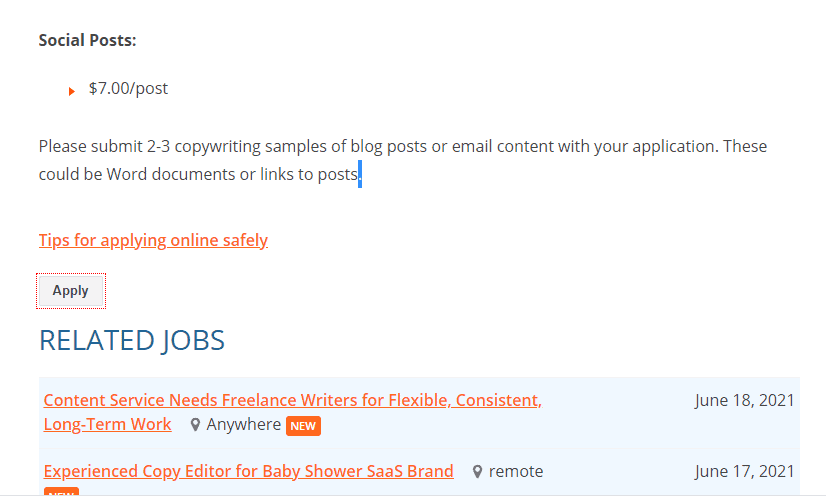
Here is an example of a Google form the ad sends you to where it has a section on resumes.
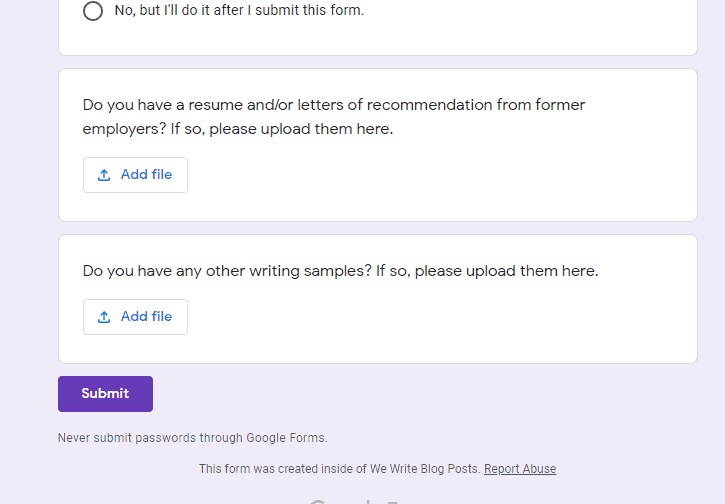
Pro Tip – Don’t turn in a resume without a cover letter. Many companies use job management systems for applicants and have a separate section to upload a cover letter.
Essential Elements of a Freelance Writer Resume
When creating a resume, it’s important to include several key elements.
Links to Your Portfolio or Website
Today it’s customary to add a link to your website or portfolio and social media profiles (as long as they’re professional, which you need them for your website anyway). LinkedIn is a good one to include.
Adding your portfolio or websites is a way to make your resume unique and a way for employers to see samples of your work which almost every writing job requires.

Summary of Experience and Qualifications
Today many resumes include a summary section. A well-written summary makes you stand out instead of blending in with the pile of other resumes the person is reading.
Summarize your past and current employment and use it to illustrate why you’re the right writer for the job. Also, include relevant experience in related fields too.
What Not to Write in Your Summary
Don’t try to fit your entire job history in the summary section. Essentially, summarize your work experience and not your whole life.
Also, you shouldn’t be conceited and don’t write about jobs and experiences that DON’T relate to the job you’re applying for.

Relevant Skills
This section is pretty self-explanatory – you want to discuss the relevant skills you have related to the job. There are hard skills and soft skills.
Today’s resumes are more skill-based vs. resumes based on your experience and past jobs listed in chronological order. So, I like to include eight to ten skills, and some of them are usually listed in the job ad.
This is where you tailor your resume to the job requirements. If they list skills they want you to have, make sure to include them if you possess them.
You want to focus on the soft skills that show how you are as a person and employee. So, after including the ones the ad lists, list other ones unique to your experience. However, list any hard skills that relate to that particular job.
What’s the Difference Between Hard Skills and Soft Skills
Soft skills are more universal and less defined. They can apply for multiple jobs. These skills enable you to fit in with a specific workplace because they consist of your personality, manners, flexibility, and attitude.
Hard skills are your abilities and talents that you can measure. You can learn hard skills through education, hands-on training, or work experience. Here are some examples of soft skills and hard skills.
I usually list my soft skills at the top, but I’ve also seen them listed below education towards the bottom of the resume.
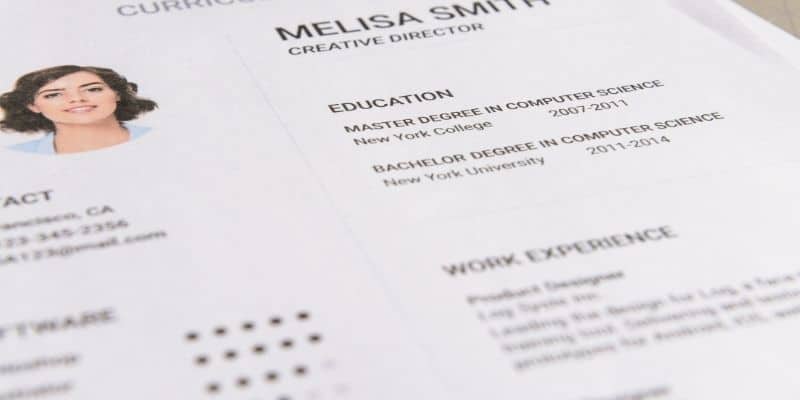
Experience
In this section, you want to detail your relevant past work experience. If you’ve had previous freelance writing jobs, you can list them.
But you don’t want to list every single job you’ve ever had. You want to include relevant experience. Now, by all means, don’t leave employment gaps.
However, you don’t want your resume to be over two pages. The consensus is that people are busy and don’t have the time to read 300 resumes over two pages.
If you have relevant traditional job experience, you can add that too. For example, I’m a freelance writer for businesses in the security industry and worked in law enforcement for over
That’s a huge plus because these businesses know I can talk the talk and walk the walk. So, I add my traditional employment in the experience section.
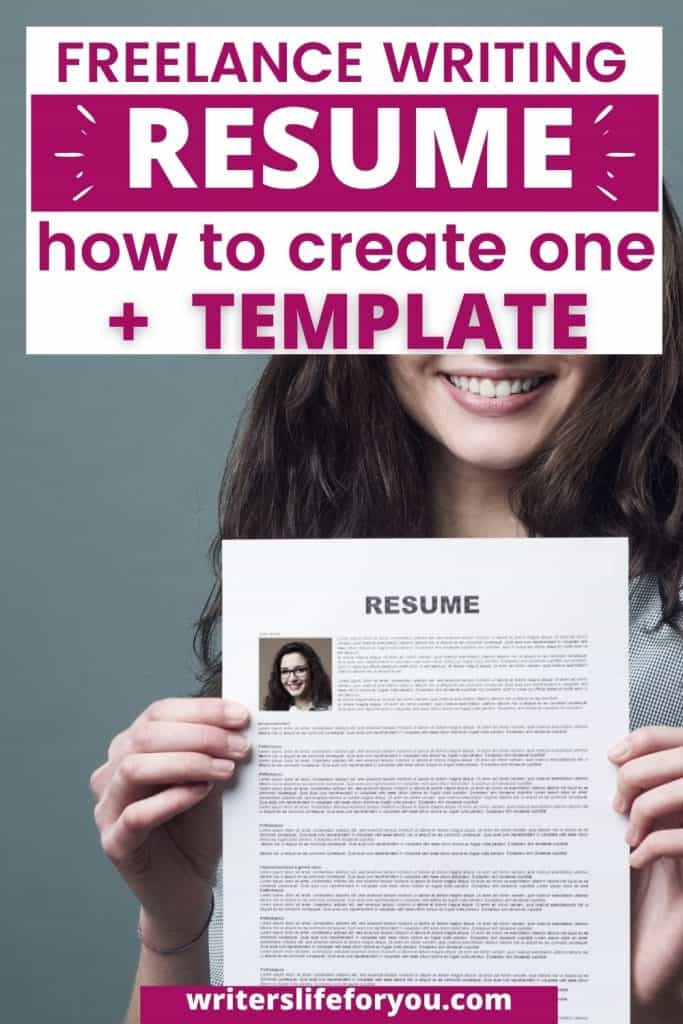
Education
Now you’re to the part where you add your education. I always add my college degrees because it shows you have an advanced education. Plus, mine just happens to be all criminal justice-related, which goes with my niche. But I would still include them if I applied for a job outside my niche.
You can also include your certifications or career-related courses. For me, I had a law enforcement certification and took a basic crime scene course, among other classes I took.
Sometimes I include that I started my doctorate; it just depends on the job I’m applying for.
Accomplishments and Awards
This section is your chance to show potential clients that you’ve been recognized for your work and producing measurable results.
You can put statistics here like one of your clients gained 10 percent more leads based on your writing like you do in your freelance writer cover letter.
Of course, if you don’t have this information, you can provide also add things like problems you solved, your overall client success rate, special projects you worked on, and any other similar things.
Pro Tip – You want to quantify your results, so to associate numbers with your accomplishments, you can explain:
- Frequency – How much work could you complete in a certain time frame or how many times a day/week/month you did specific tasks. You can also explain how complex certain projects were that you worked on and how long it took you to find them.
- Range – You can estimate the number too as long as you can explain where that number came from in an interview.
- Scale – How large were the budgets you managed, how many people worked on your team, etc.
How to Create Your Freelance Writing Resume
Thankfully, you have many options when it comes to creating your resume. Let’s look at some.
LinkedIn Resume
Yes, LinkedIn has a resume builder, and I had no idea until recently! If you’re not familiar with LinkedIn, it’s a social media channel geared towards professionals. It’s where I’ve found most of my freelance writing clients.
You can find the resume under “more” in your profile. And here, you can upload a resume, create a resume from your LinkedIn profile information, edit it, and download it to use as your resume.
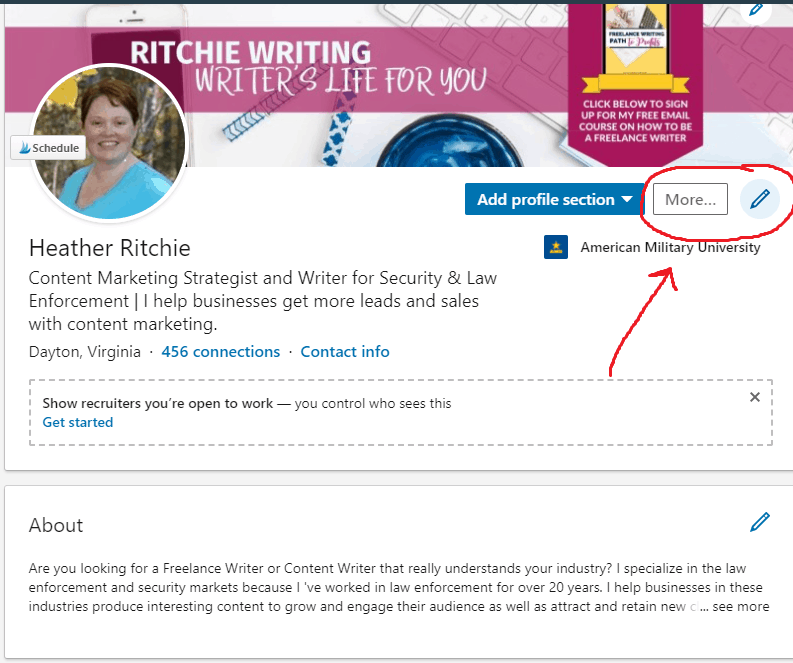
Here’s what comes up when you select resume under “More.”
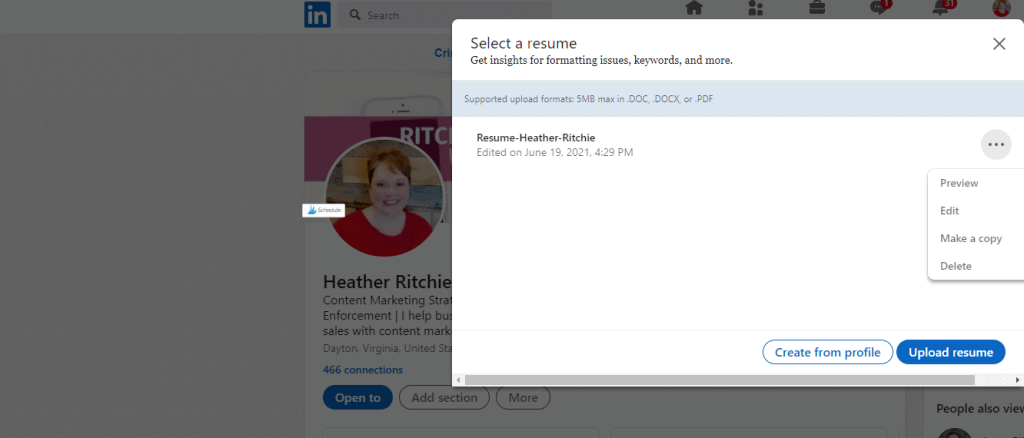
It’s a handy LinkedIn feature that not everyone knows about. If you don’t have a LinkedIn profile yet, you should consider setting up an account because it’s a great place for researching and finding new clients, especially businesses.
Resume Builders
There are also plenty of resume builders online, such as Zety, a free resume builder, ResumeGenius, MyPerfectResume, and more. I personally have never used a resume builder before, but they can save time.
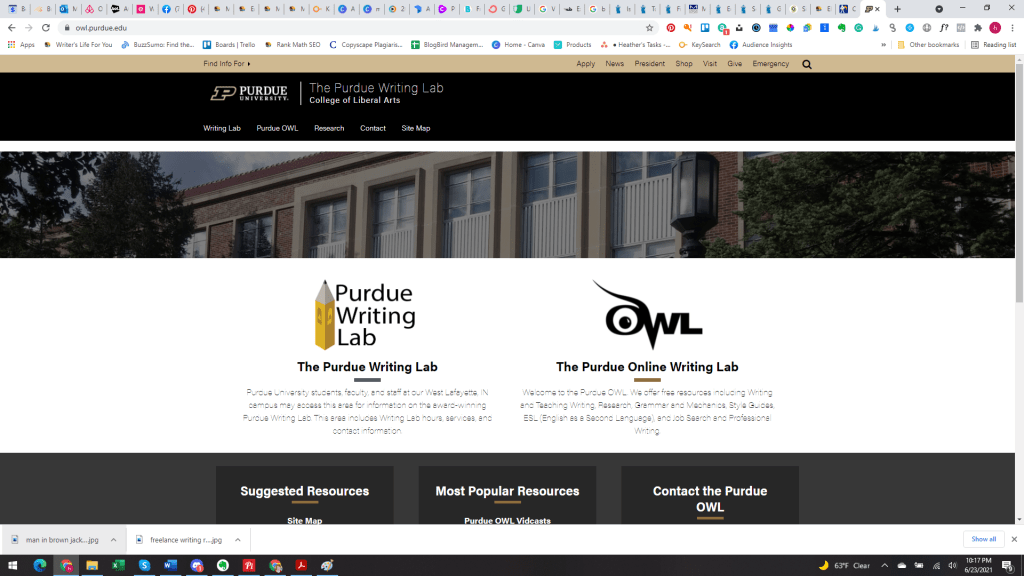
Purdue OWL
Purdue OWL is the Online Writing Lab for Purdue University, and I used it a lot in college because it has many helpful resources. It has a resume workshop and plenty of resources on resumes such as design, using one or two pages, sample resumes, and more.
It’s a great resource to help you write and design your own resume.
Google Docs Resume Templates
Google Docs also has some simple resume templates which are perfect for online jobs. You don’t want to make your resume too fancy with embellishments and perfume like Elle Woods’ college letter in Legally Blond.
Microsoft Resume Templates
So, I’m old school and use Microsoft Word all the time. They have many resume templates of all types to choose from.
You can find templates on the Microsoft Office website, or when you open up Microsoft Word and select “New” in the panel on the left. There’s a place you can search for online templates. Type “resume” in, and you’ll see what comes up.
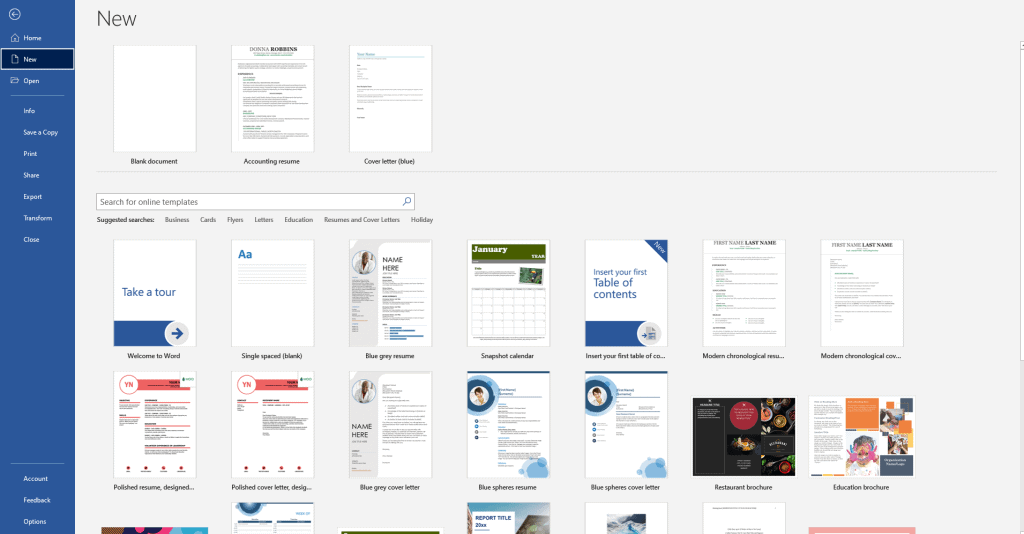
Canva
You can also create a resume in Canva. Simply search in the top toolbar on the Canva home screen, and you’ll see all the resume templates.
But keep in mind what I mentioned about being too crazy and loud. Canva has many pretty templates, and some are flashy, so channel your inner professional, not Elle.
Now we’ve gone over a few ways you can create a resume, and I have an even better solution.
Thinking Outside the Box with Your Freelance Resume
Clearly, there are many resume solutions but you can also showcase your work by combining several sources because really what a prospective client wants to see is a combination of your professional experience and if you can write well.
And you don’t have to limit yourself to the standard resume format. You should use a variety of ways like LinkedIn, your freelance writing website, a portfolio.
I’ve already mentioned that LinkedIn is a great social media platform to find your next potential client and they can learn more about you.
Your Freelance Writing Portfolio
Having an online portfolio is essential as a freelance writer, even if you’re brand new and have to create samples because you haven’t found clients yet. You can add a portfolio page to your writing website or create on a platform like ClearVoice or Contently.
I’ve found one of my most high-paying clients on ClearVoice and love how easy it is to create a portfolio there.
You can also create a portfolio on your website using a publication or creating a new page if your theme supports one. I don’t recommend you only set up a portfolio website as it’s very limiting.
I’ll explain more next, but your portfolio, website, and LinkedIn all work together to paint the full picture of you, your experience, and your writing samples.
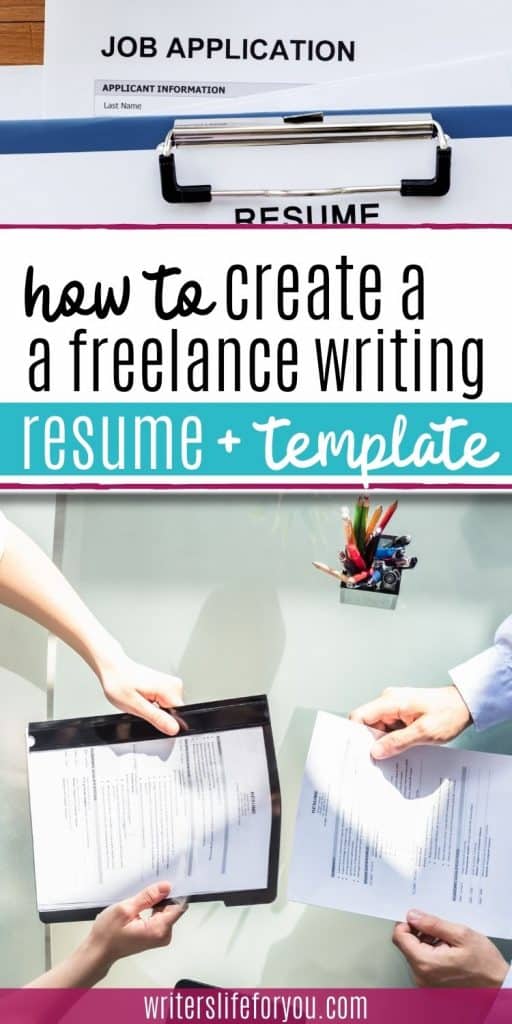
Your Freelance Writer Website
I’m not going to lie, technically you can be a successful freelance writer and get a variety of clients without a website, but I don’t advise that.
A freelance writing website is the perfect place to start a blog, market your services, host your portfolio, and more. There is no better marketing tool than your writing website.
Writing blog posts on your website allows you to show possible clients that you know your niche and that you can write engaging content. It also shows off your writing style.
Plus, creating original content that’s SEO optimized well on your website helps you rank on Google to drive traffic back to your site.
And when you have a website, you need to start social media profiles in your blog or business name so you can network and get potential needs from the various platforms.
When you combine the power of social media networks, a great writer website, and a professional portfolio, you take marketing your writing business to the next level.

Freelance Writing Resume Example + Template
Now, the easiest way to create a freelance writing resume is to get a template and writer resume sample from someone who knows the type of resume you need – aka ME, a fellow writer. And I have both for you here in this post.
All you need to do is sign up below and you get a template you can use to illustrate your writing skills, freelance writing job experience, other basic skills, education, and more.
It’s easy to use and customize to every freelance writer job you apply for along with my cover letter template. Both of these are available in my Quick-Start Toolkit for Freelance Writers coming out soon!
Unlike many writers who started off writing for high-paying clients they cold pitched to, I had to do things the hard and slow way because I was afraid of cold pitching (but don’t be because it’s not that bad and at least it’s not cold CALLING + you’ll get better clients).
I found a lot of great writing jobs on job boards so I submitted a ton of resumes and cover letters, which is why I have the experience to help you create one.
But when yours is one of hundreds of resumes submitted for the job post, you need a lot more than excellent writing skills to get the job. And if you have no experience writing or at least not extensive experience, you need a trick to set you apart.
Now I want to answer some frequently asked questions I hear all the time.
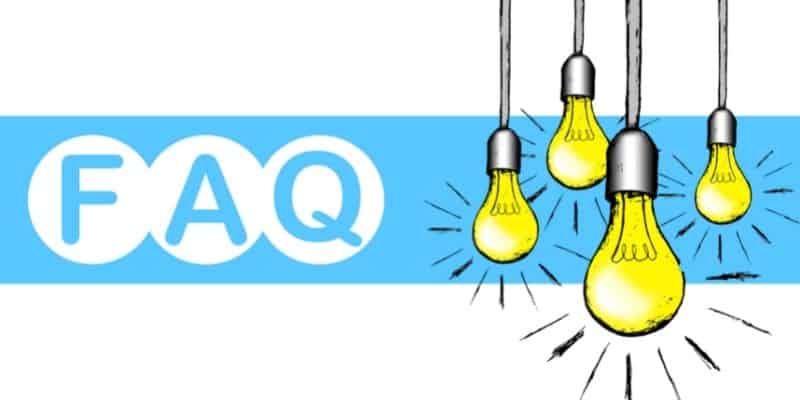
FAQs
Do I need a cover letter with my resume?
Yes, you do as the cover letter is used to interest an employer and compel them to read your resume. The only time I would not include a cover letter would be if you see any job posts that specifically request people NOT to submit one.
However, I’ve never seen that to this day, in fact, even job management systems often have a separate spot for a cover letter.
Does freelancing experience count on a resume?
Yes, it does! And it’s great to add to your resume because it shows you have freelancing experience and that you have professional experience working from home. You can even add notable projects you’ve worked on or clients you’ve worked for.
And over the years, an extended period of freelancing is also a sign that you have a successful business and happy clients so never underestimate the power of freelancing experience on your resume.

Final Thoughts on Freelance Writing Resume
A freelance writing resume has the vital job of conveying your freelance writing experience and any other related professional background you have. You can also highlight your best hard and soft skills such as organizational or time management skills or the type of content your write.
Essentially, your resume sells you to a potential client and highlights all the great things about your background, experience in the industry or as a writer, your education, and more.
In just two short pages, your resume is supposed to convince an employer that you are the right person for the job out of hundreds of applicants.
So, sign up for the freelance writer resume template and example today!
Related Posts to Freelance Writing Resume
How to Organize Your Home Office to Get More Work Done
Freelance Writing vs Blogging: Is One Better Than the Other?
13 of the Best Books on Freelance Writing and Business that Will Make You a Success
25 of the Best Gifts for Writers that Are Totally Unique
The Ultimate Guide to Freelance Writing for Beginners
Everything you need to know to create your freelance writing resume.
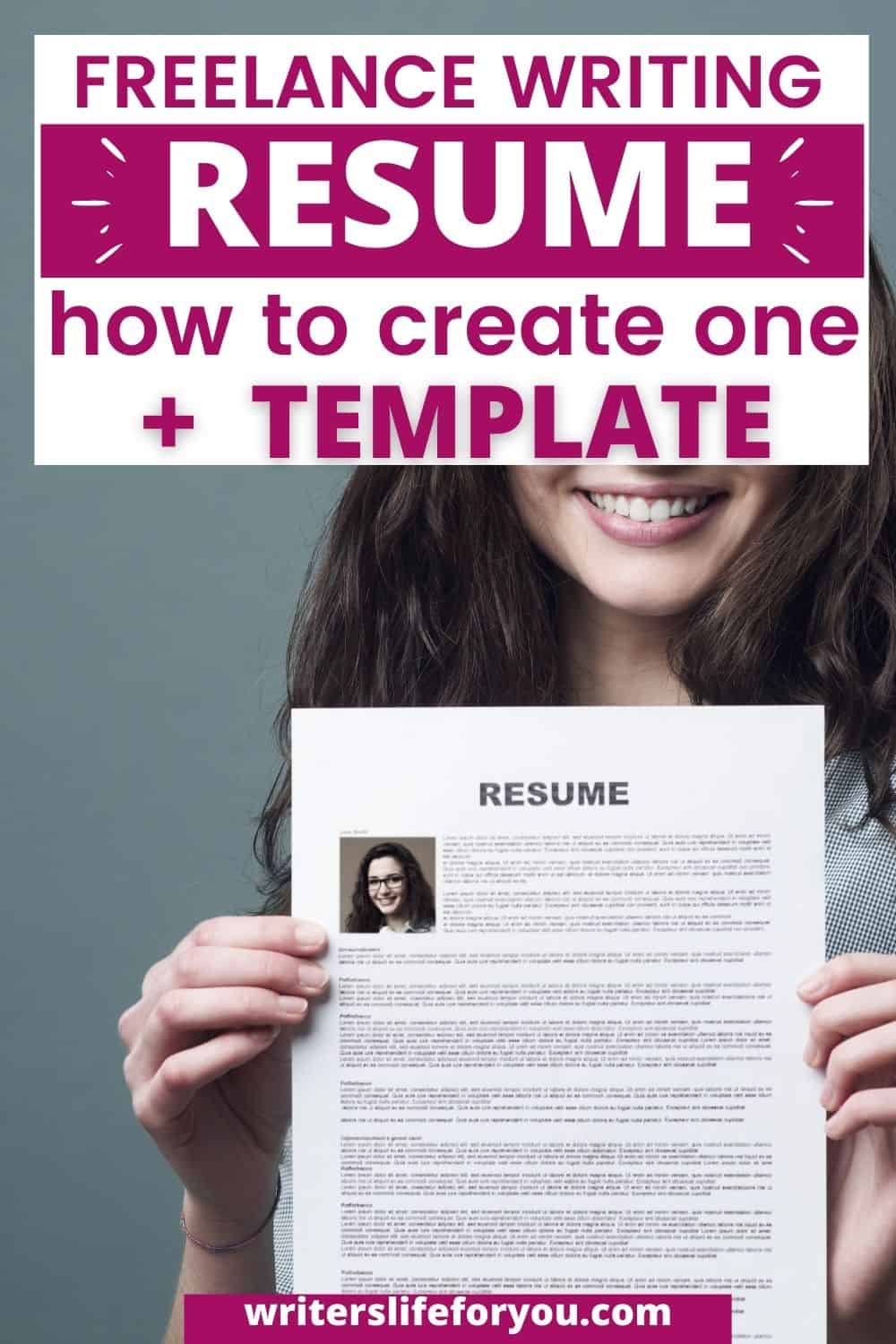
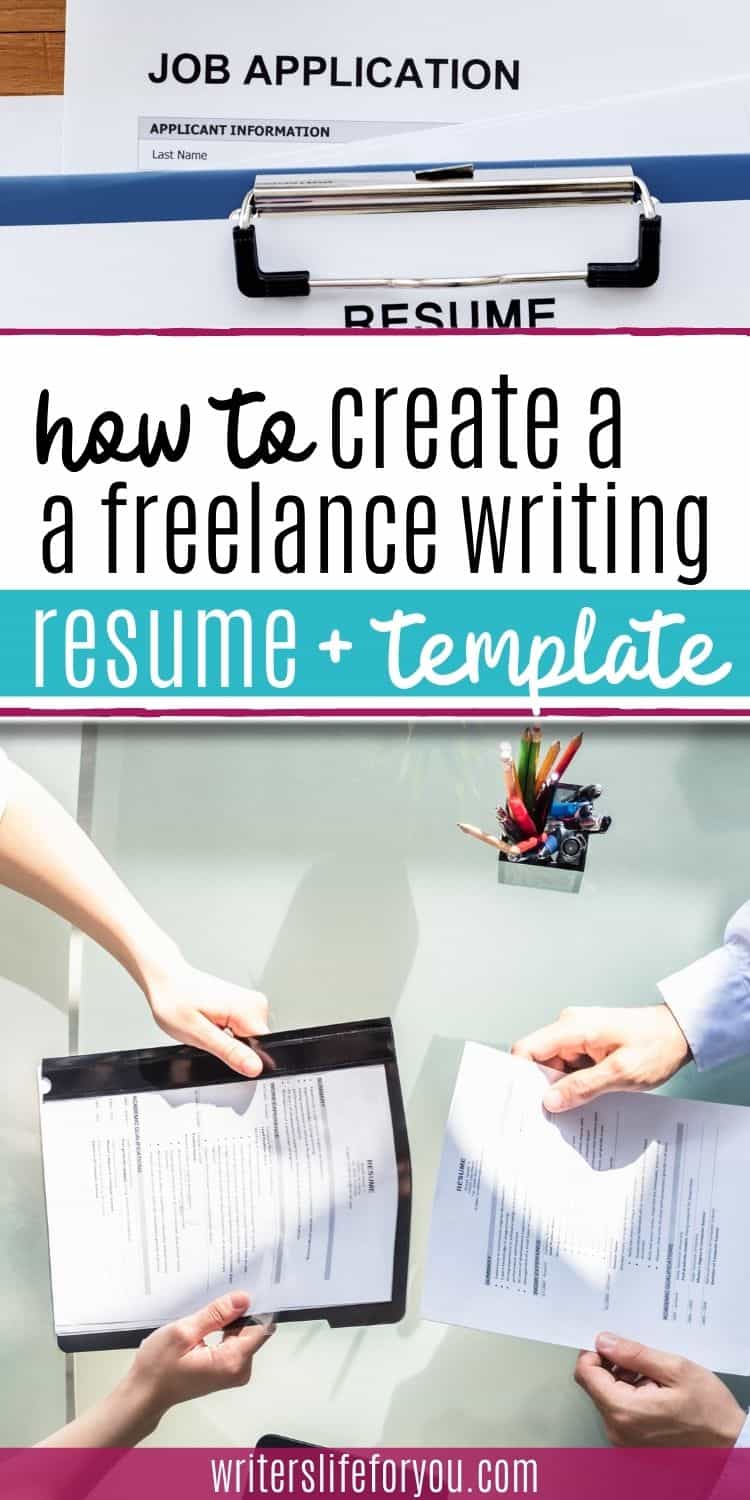


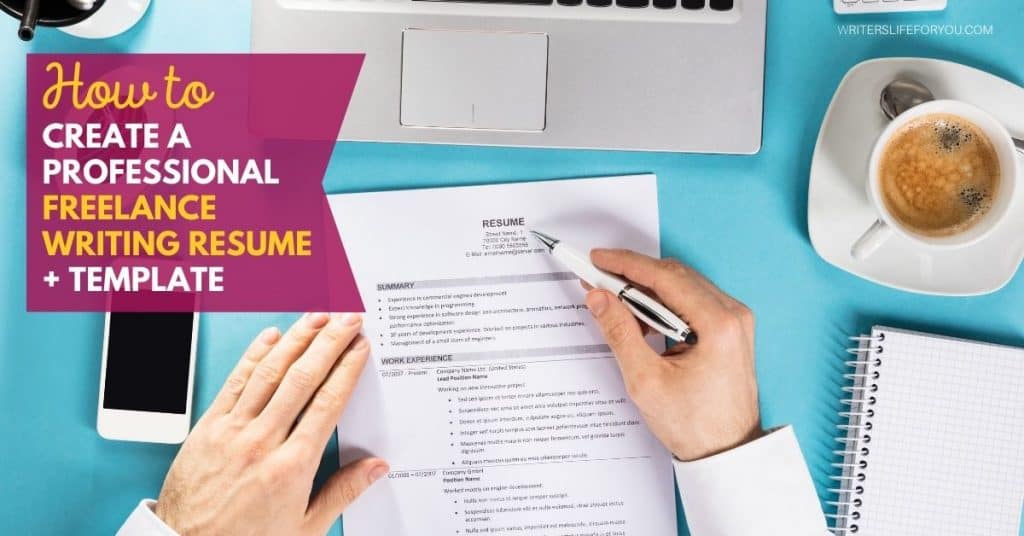
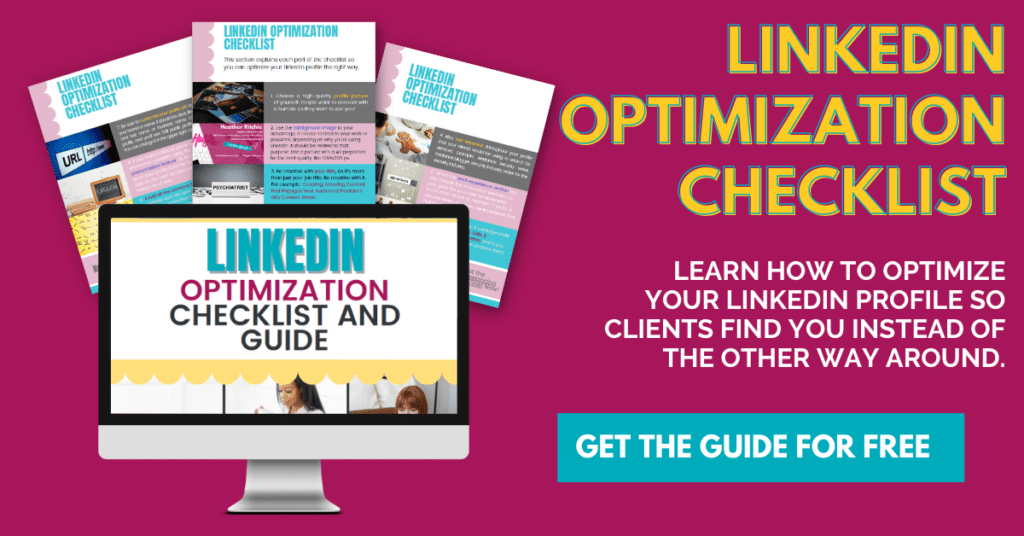
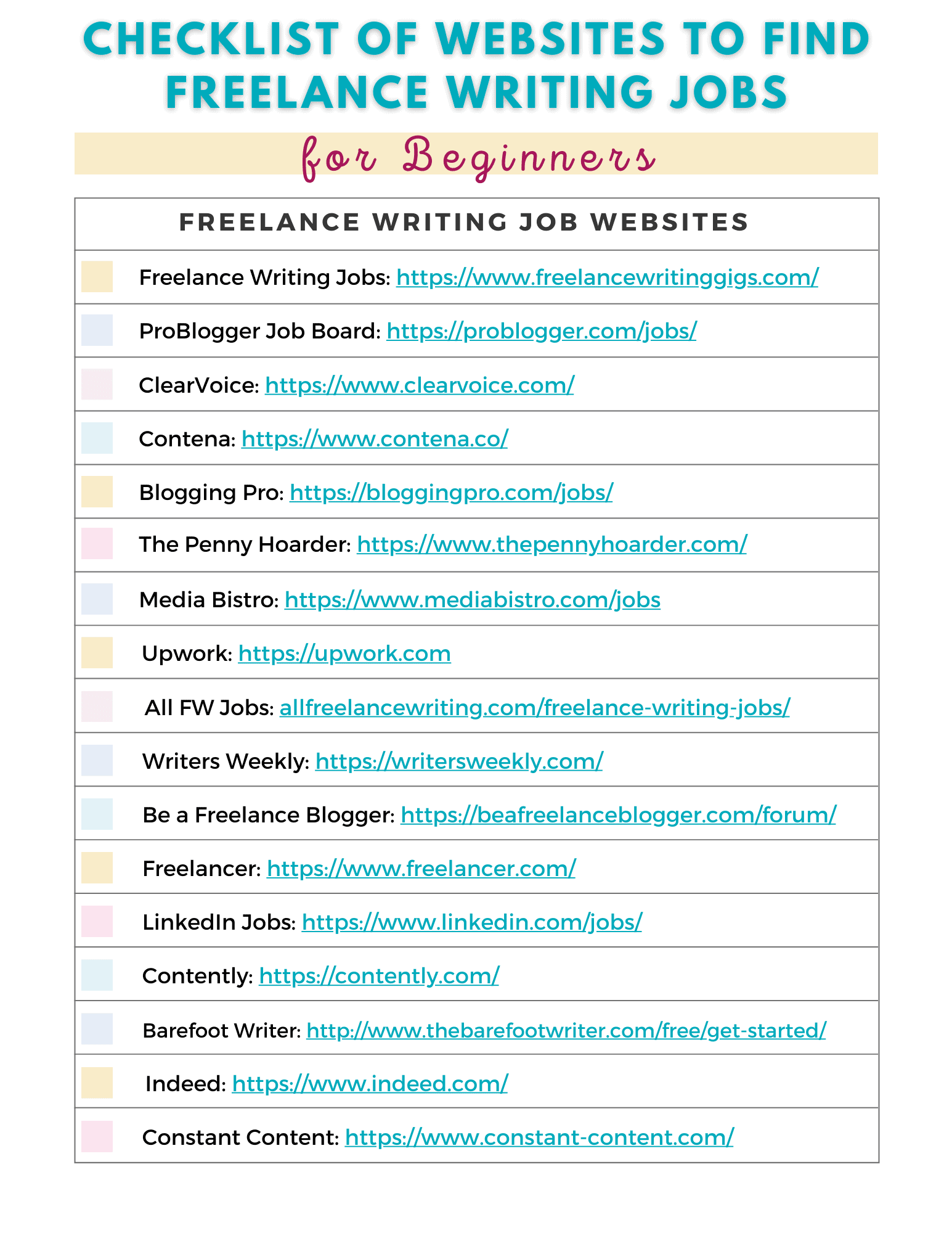
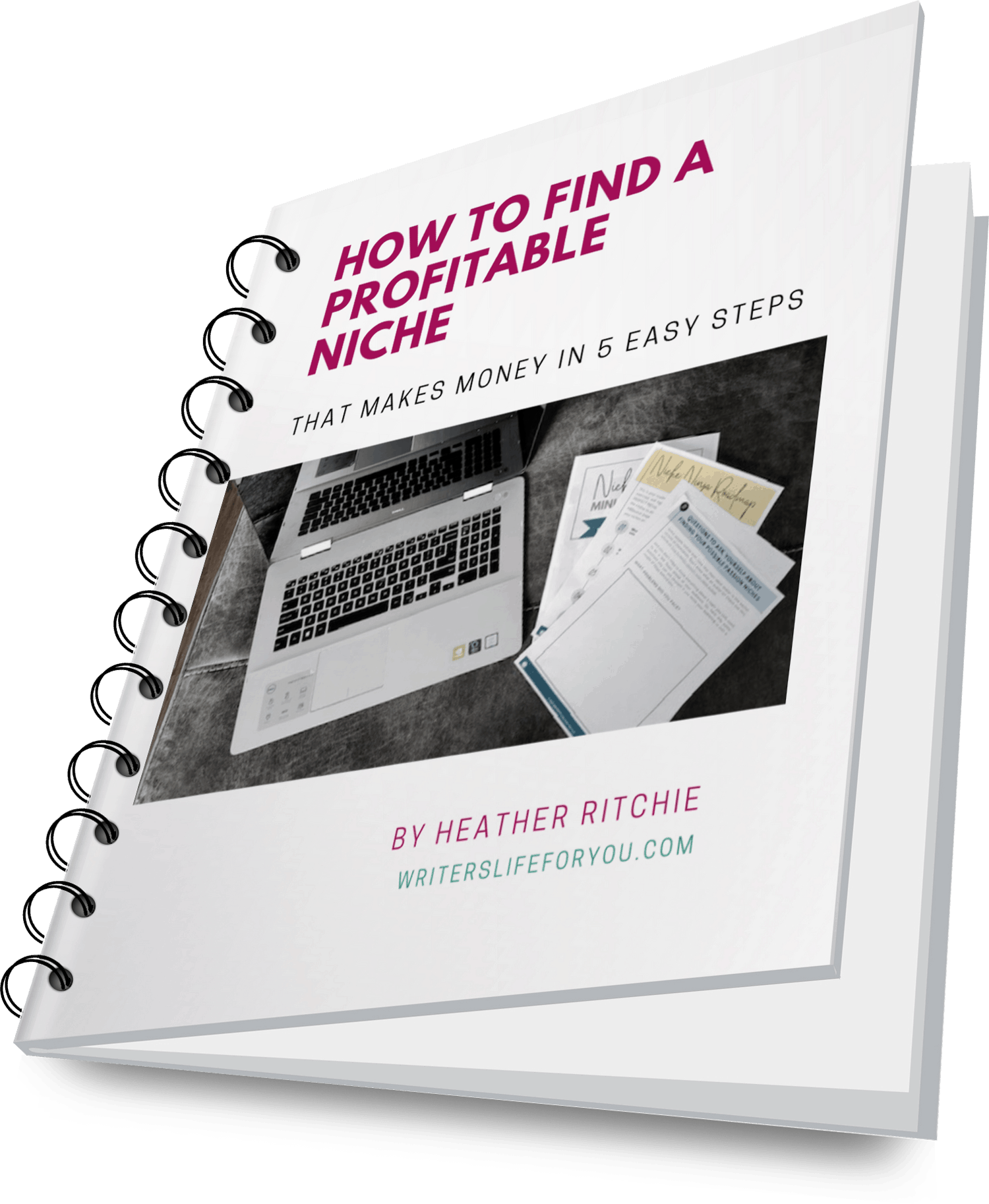

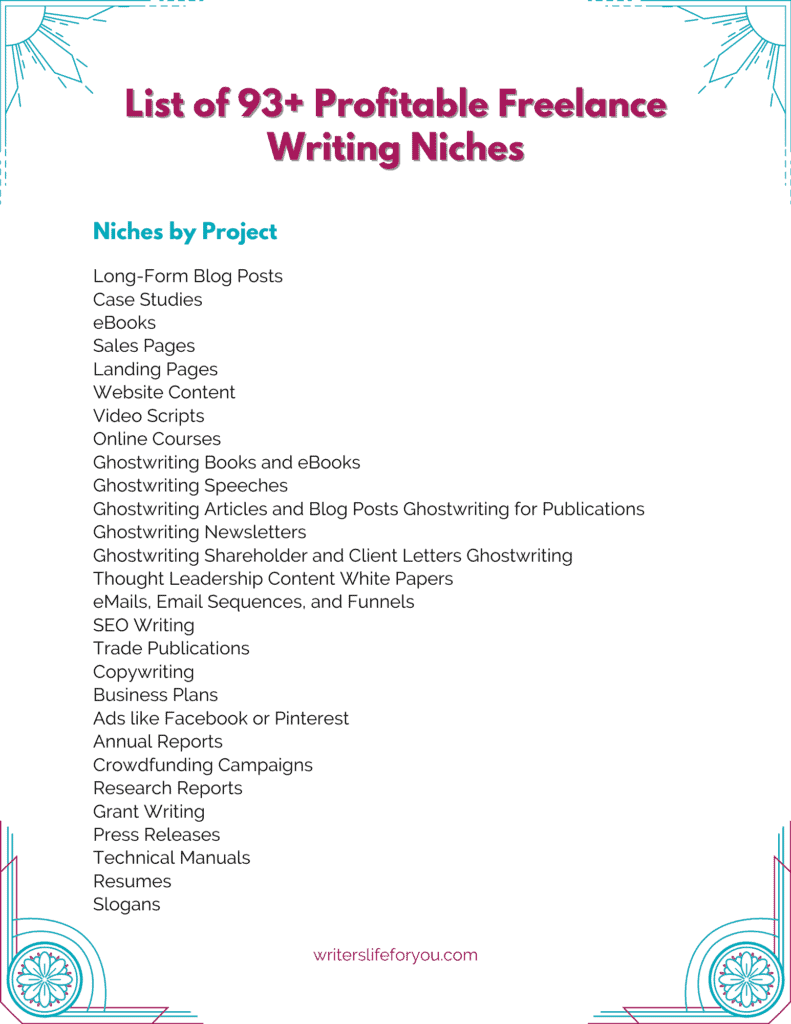
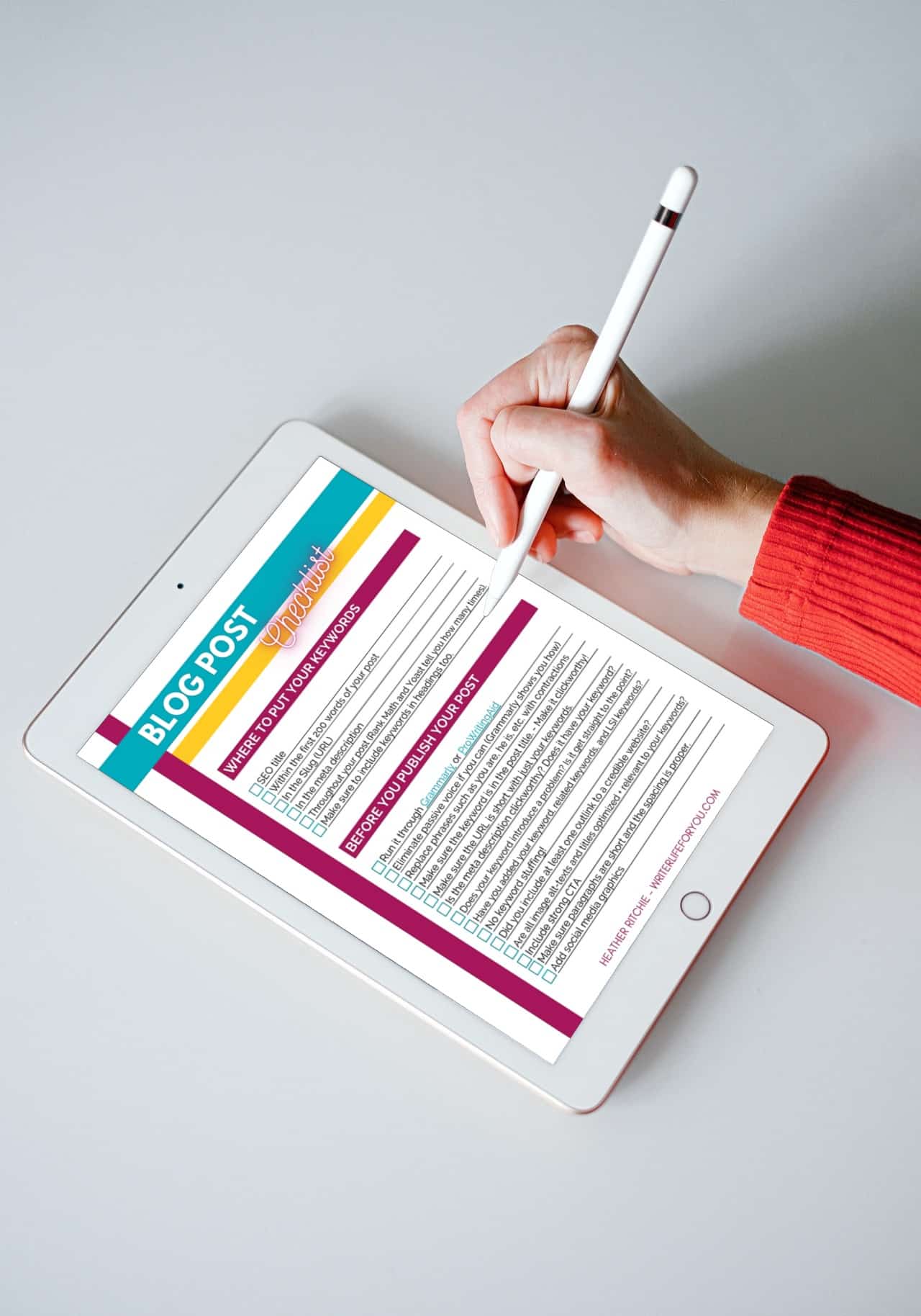
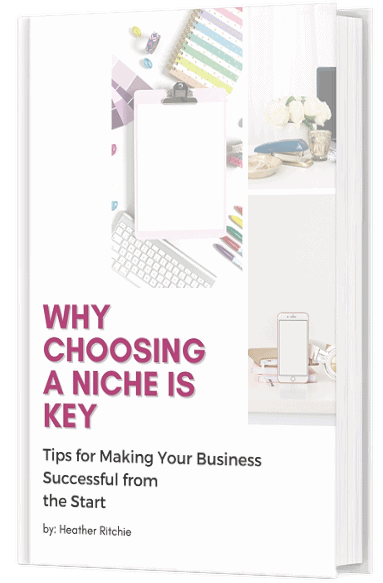
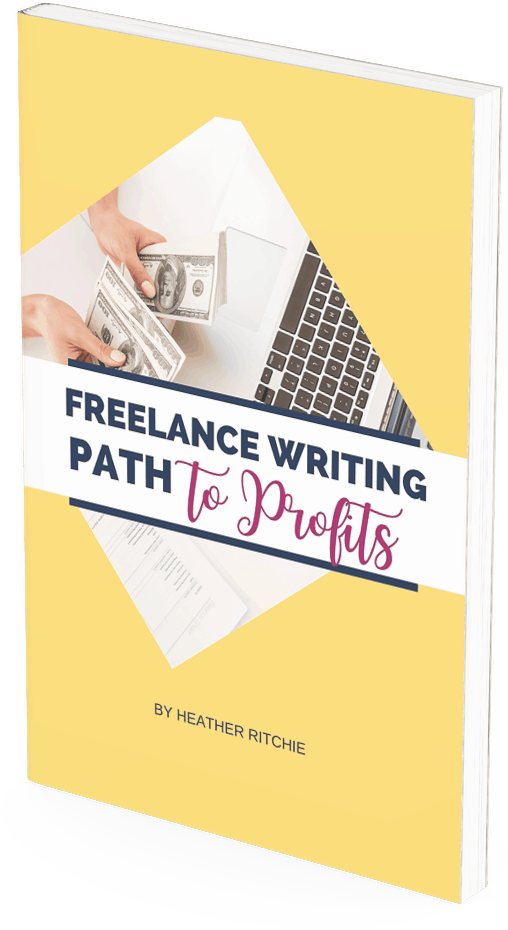
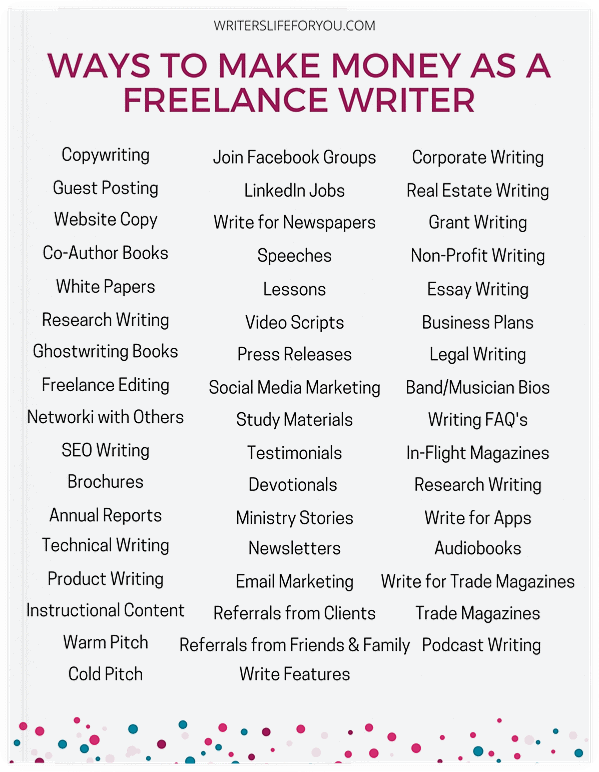
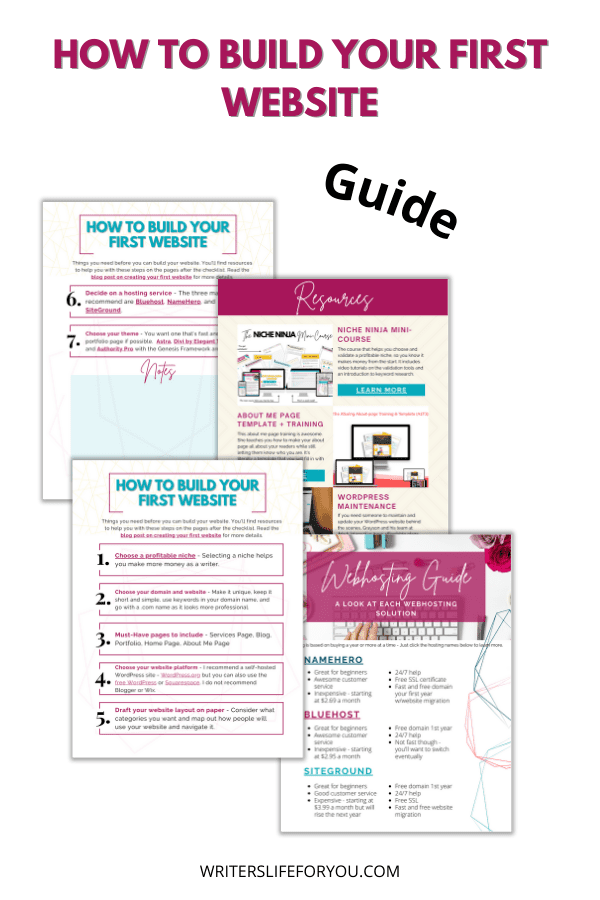
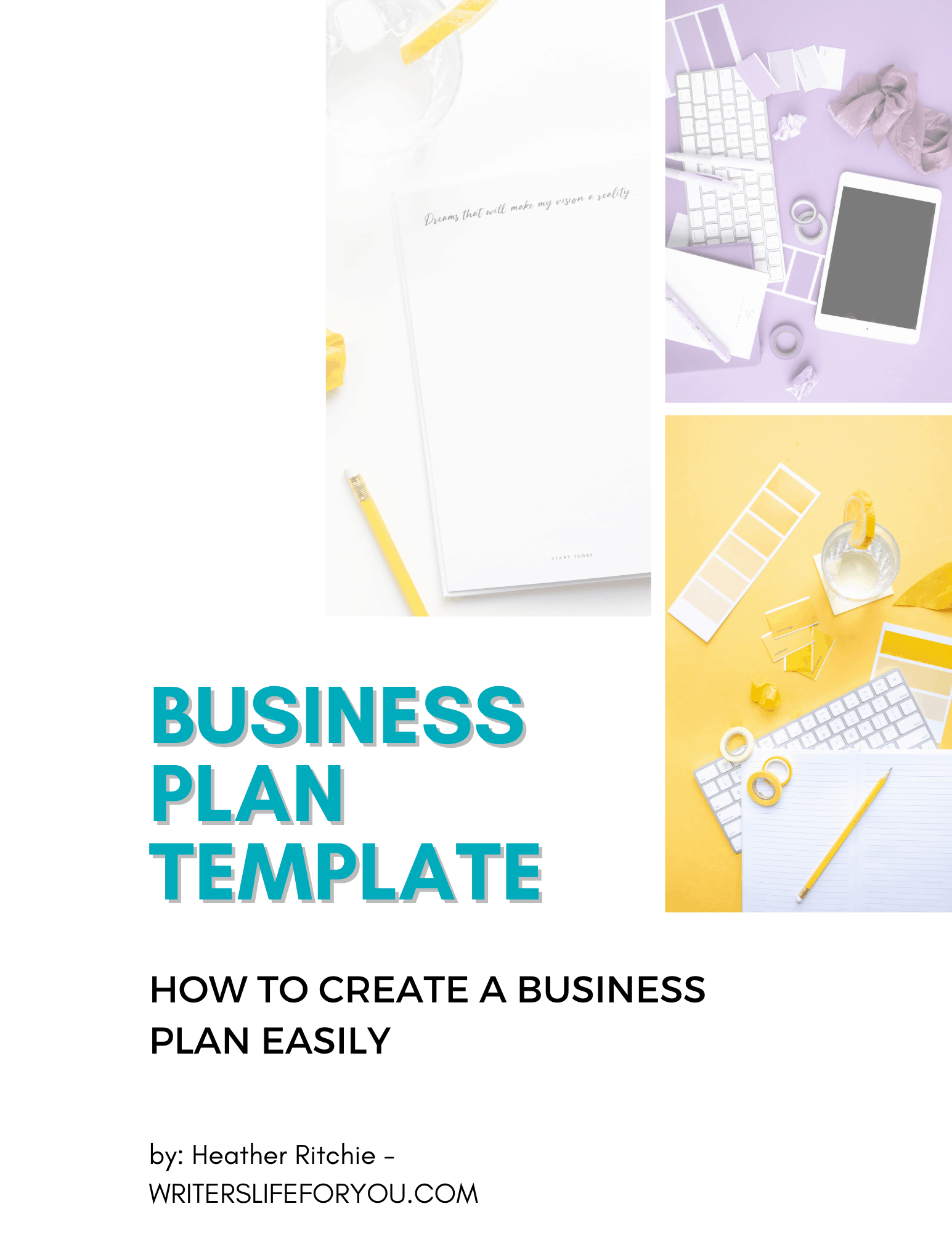
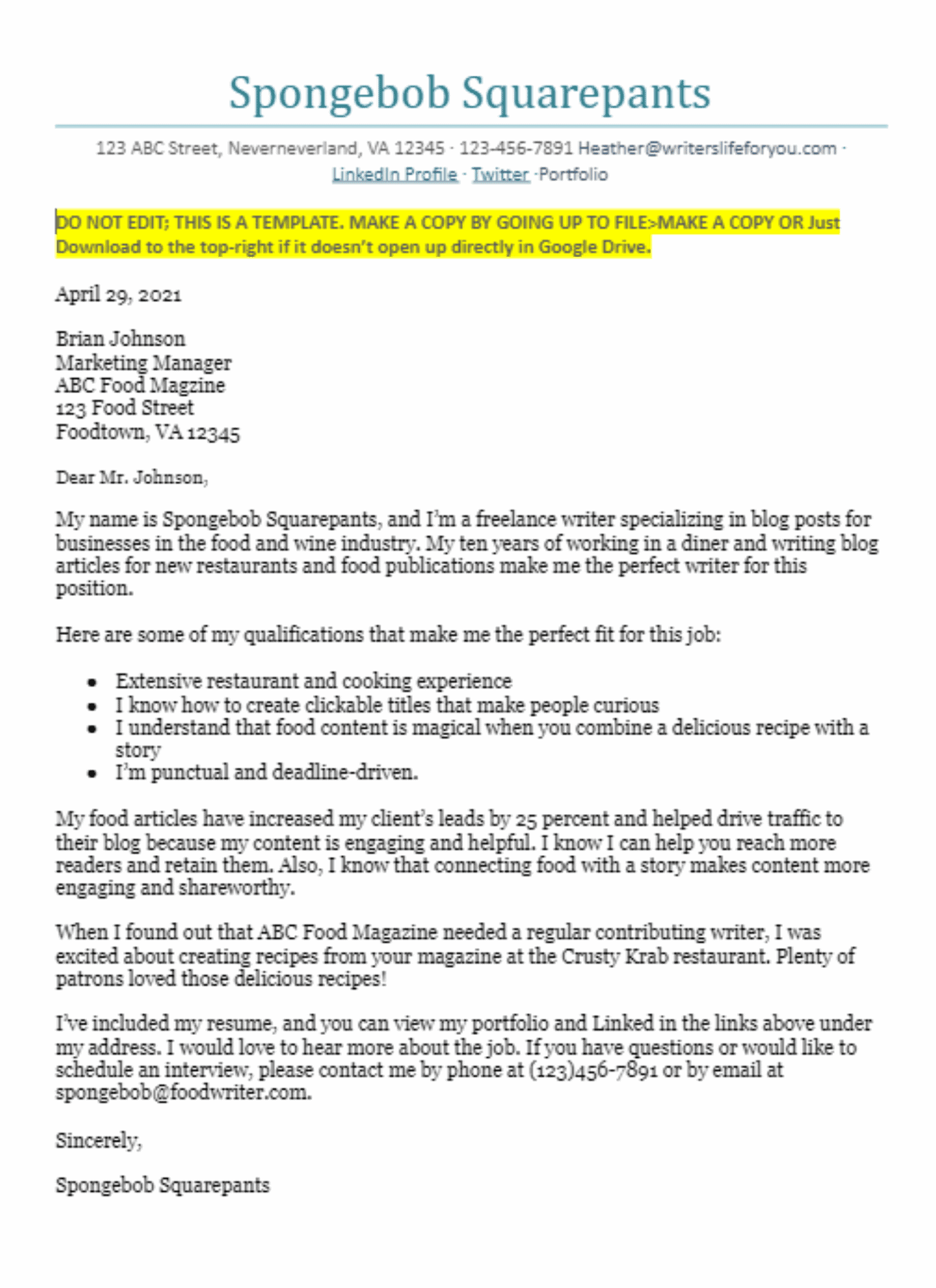

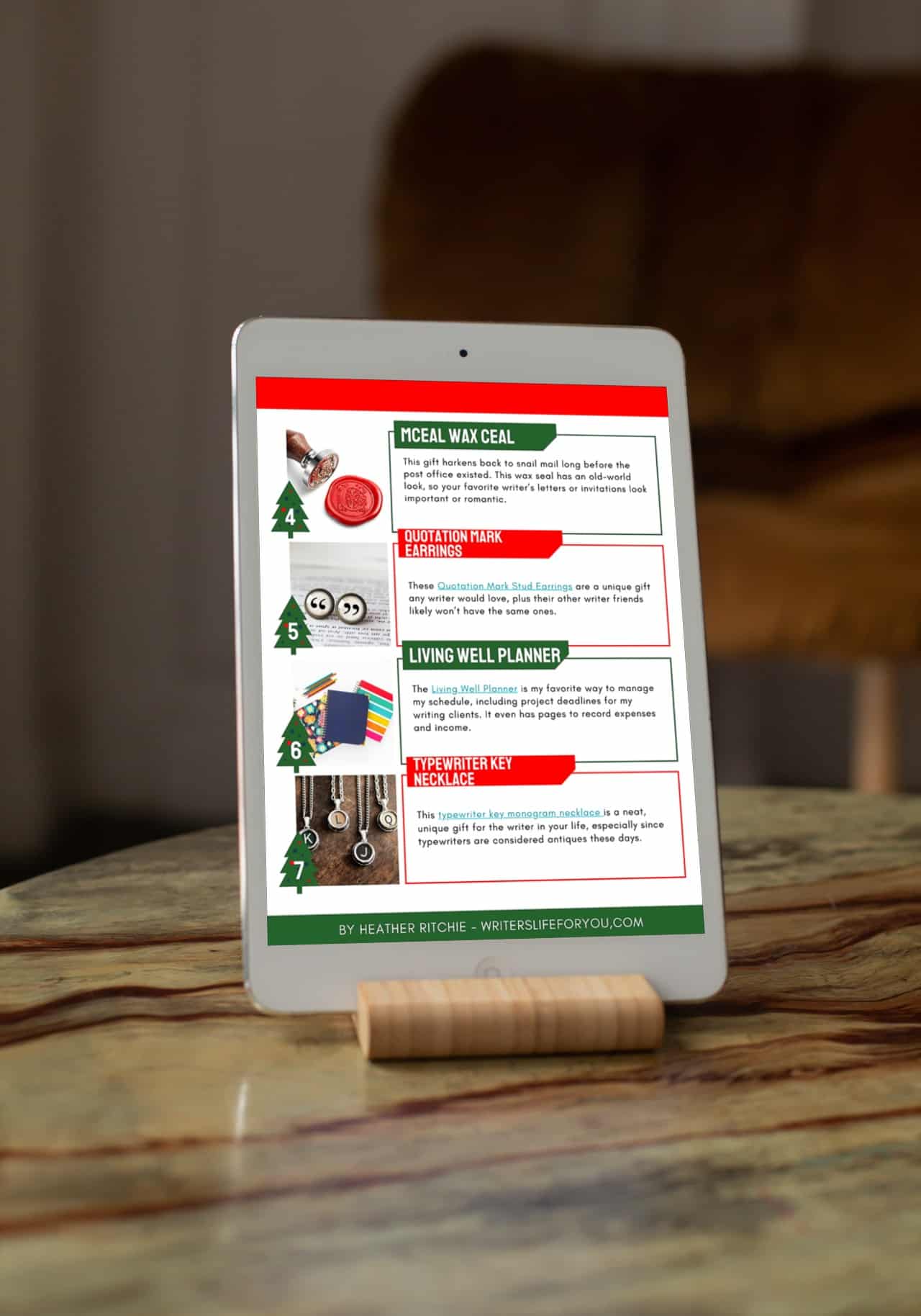
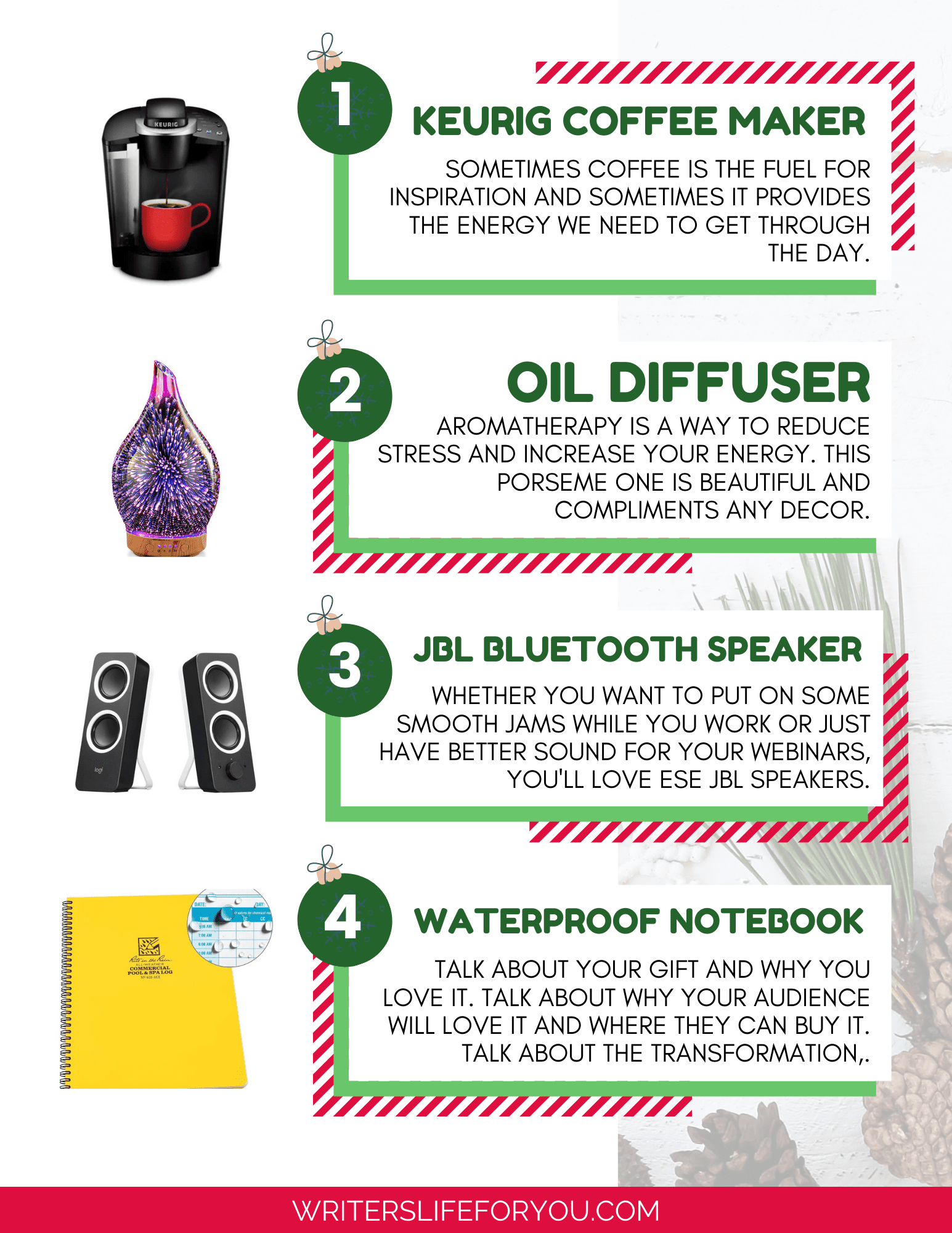
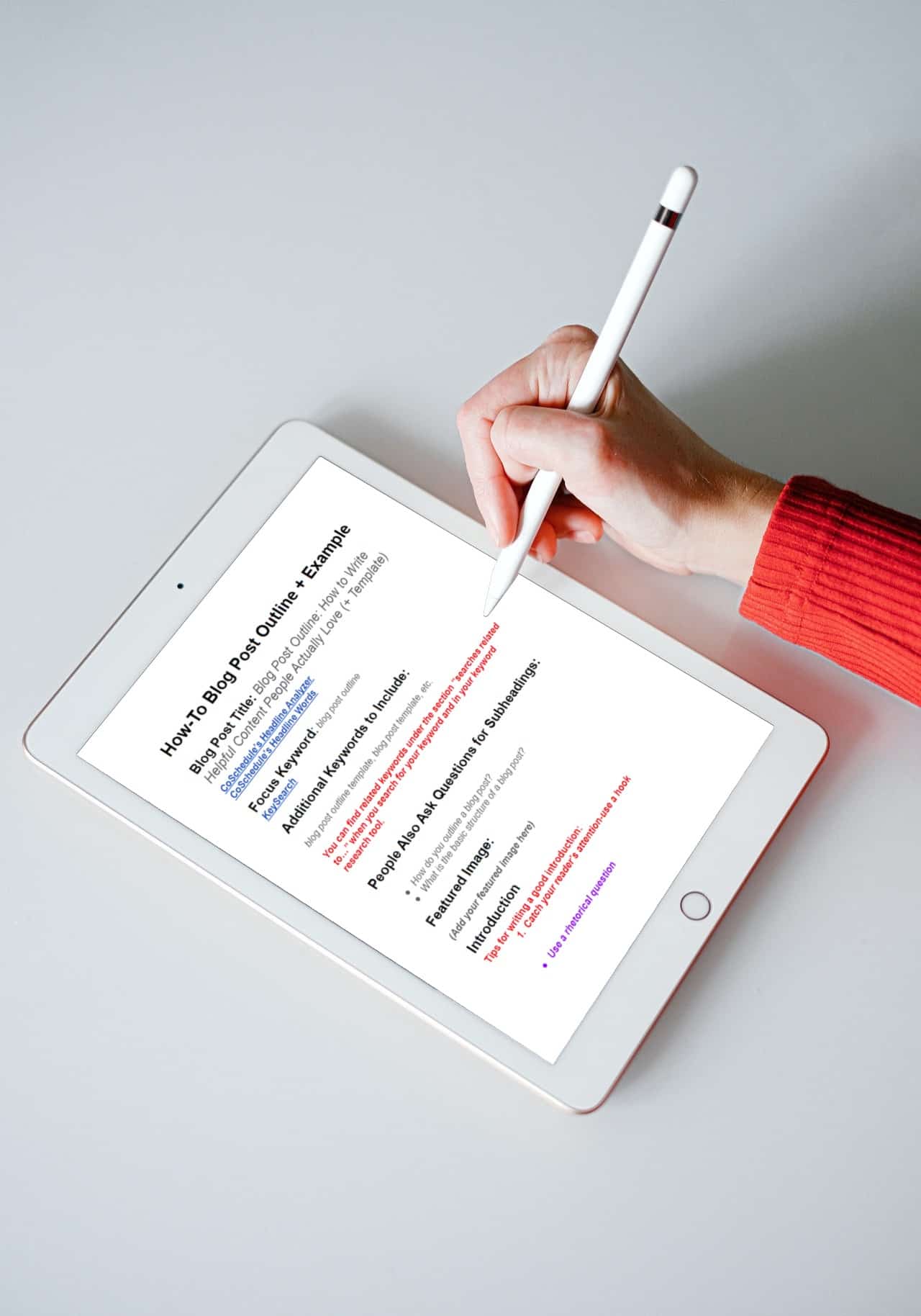
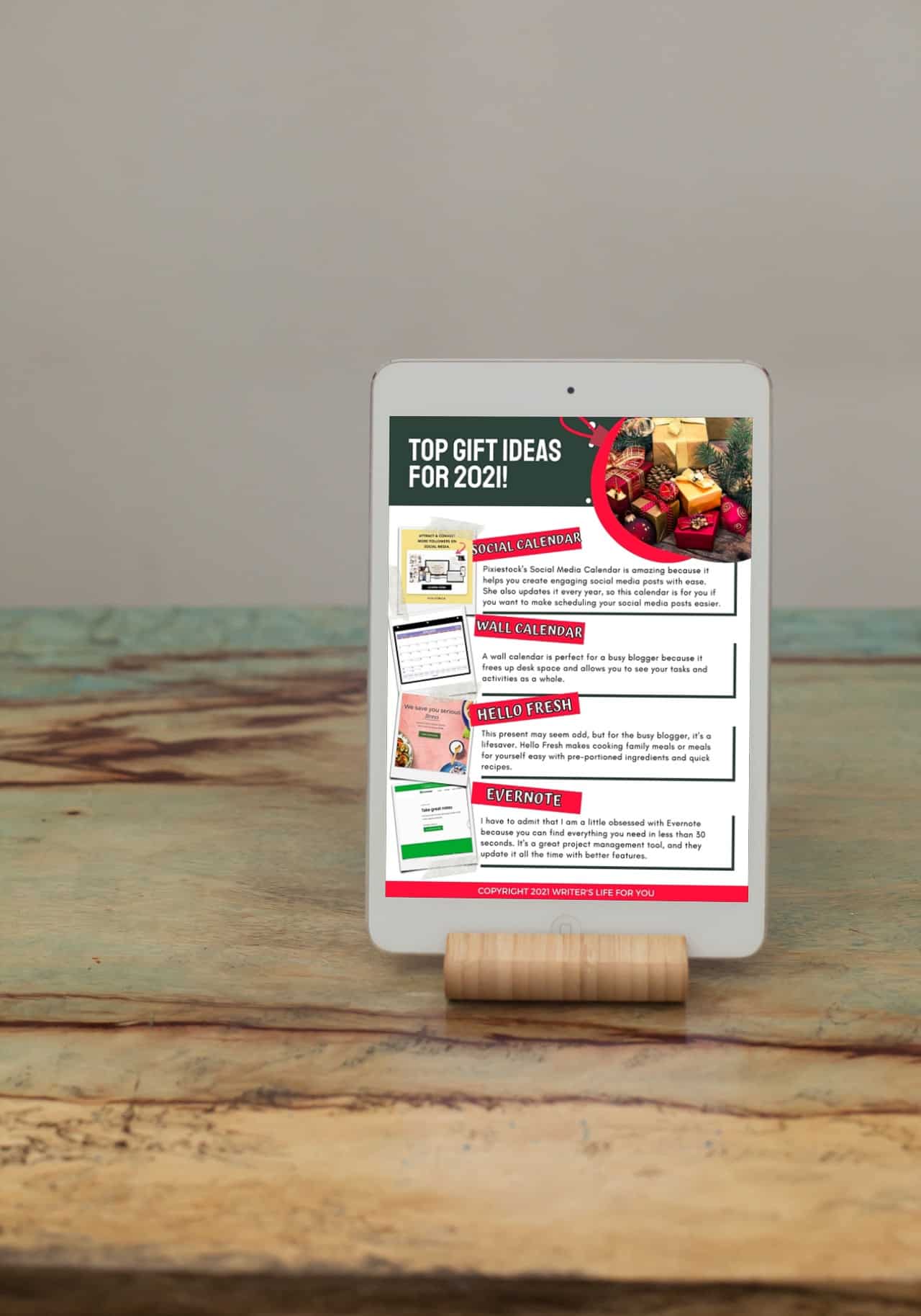
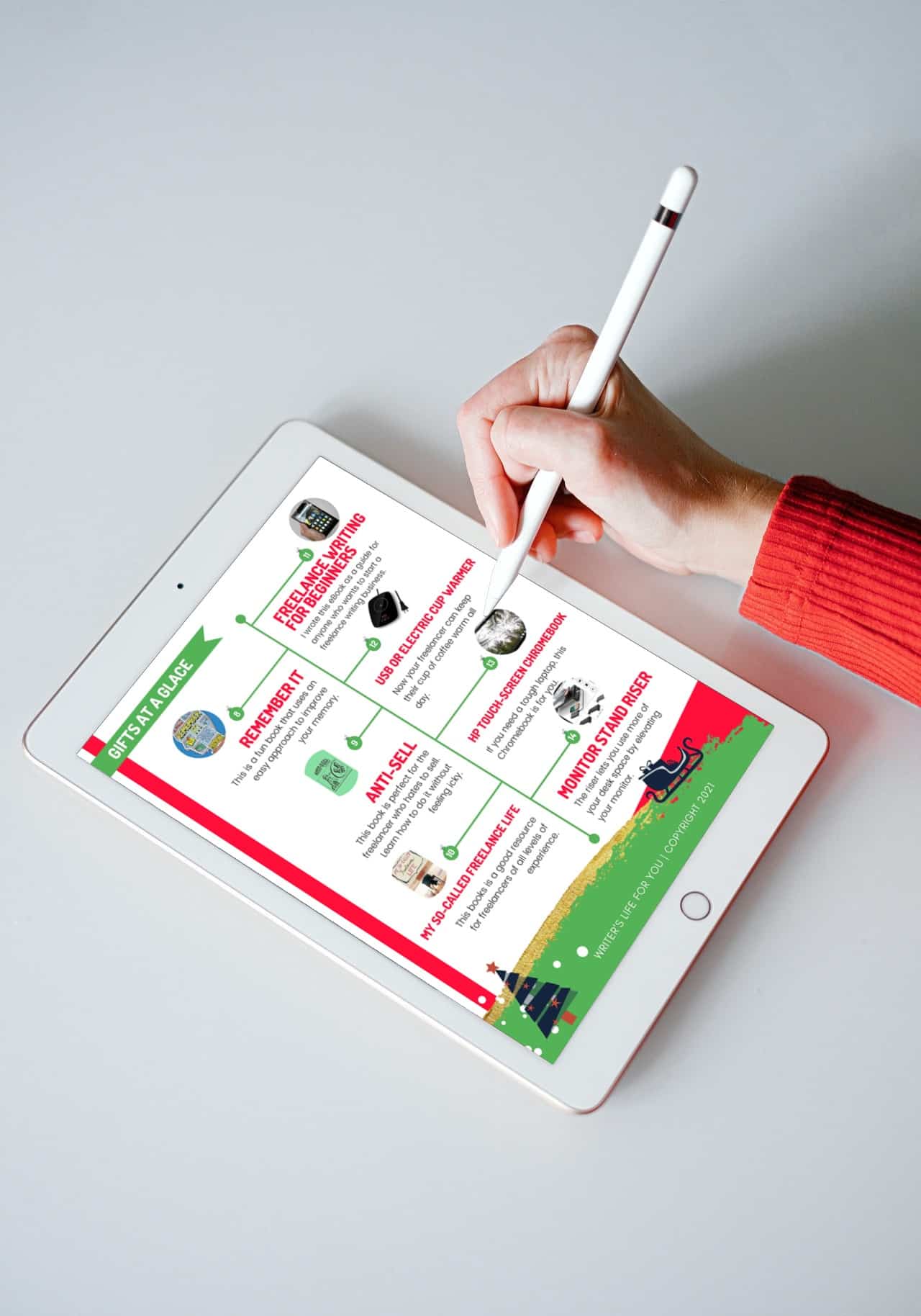


Very helpful, Heather! My LinkedIn, especially needs some special attention. There is so much potential there. I need to tap into it. Thanks,
Thanks for reading Scott, I’m glad it was helpful. LinkedIn is the perfect place to get clients especially if you optimize your profile right!
You should always have an up to date resume, (even if you’re not currently looking, as you never know when the perfect opportunity will pop up). And using a freelance writing template is a great way to make sure you have all the important info covered!
Yes, I agree and, of course, resume format changes over time too so it’s always good to make sure your resume is up to date for ay opportunity!
Oh my goodness! Impressive article dude! Thanks, However I am experiencing problems with your RSS. I don’t understand the reason why I can’t subscribe to it. Is there anybody having identical RSS problems? Anybody who knows the solution will you kindly respond? Thanx!!
I’ll check into the RSS feed for sure. I am so glad you liked the article. I wanted to create a resource that I needed when I first started writing for businesses. You can always sign up for my opt-in so you can get put on my email list to get all the tips, strategies, and access to the resource library for free. 🙂